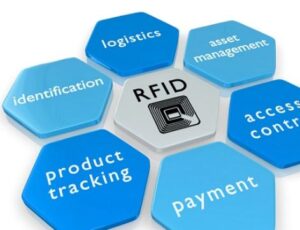RFID stickers are a cost-effective and straightforward way to monitor your inventory. They offer real-time visibility into product movement through your supply chain, helping you avoid missing shipments, running low on stock or product losses.
They improve inventory accuracy in retail stores by enabling retailers to instantly check in entire shipments without relying on blind receipts or individual package scanning. They can reduce cycle count time, automate reorders at safety stock levels and boost guest satisfaction by displaying products where they are located in the store.
Easy to read
RFID stickers are an efficient and cost-effective way to monitor inventory and other assets. In addition, they’re easy to set up and customise according to your requirements.
 RFID readers are usually made of plastic or fabric and contain a chip with data storage capacity. These chips are generally connected to an antenna that enables them to be read by an RFID reader.
RFID readers are usually made of plastic or fabric and contain a chip with data storage capacity. These chips are generally connected to an antenna that enables them to be read by an RFID reader.
Each RFID tag has a unique ID that an RFID reader can read to obtain information. This ID lets a program know which tag to use for specific tasks, like tracking inventory or checking out at the checkout line.
Tags can also be encrypted, providing security and protection for information. This type of security is especially beneficial in warehouses where stock levels can be monitored to facilitate better inventory management.
RFID tags come in two varieties, passive and active. Passive tags tend to be more reliable than their active counterparts when the reader is far away or environmental elements like metal or water are near the tag.
Easy to customise
RFID stickers are an efficient and effective way to monitor inventory levels and prevent losses. Furthermore, they make it simple for customers to locate products in difficult-to-reach or remote parts of your store.
If you’re considering using RFID, finding a label company that can customise your tags according to your business requirements is essential. They can create labels with all your data – product codes, barcodes and more – and create custom designs, so it’s easier to apply the stickers and guarantee their efficacy.
To customise your labels, start by deciding the type of tag you wish to print on. It will determine the hardware and printer necessary for printing the data on your label. Furthermore, you can select an encoding system for data accuracy.
Additionally, ensure your RFID printer supports the type of tag you’re creating. If not, then you’ll need to invest in a new printer.
A quality RFID printer should support all different types of tags. It must also be capable of reading the data encoded on these tags and printing it in its intended format.
Once you’ve selected the type of RFID tag to print, it’s time to begin printing labels. Although this step may seem straightforward, getting the correct labels printed at the right places is essential for successful completion.
When using the GS1 or ISO encoding system to encode your data, select an appropriate numbering scheme so it is clear which items are being tracked. Furthermore, adding variable fields to labels allows for automated updates when data changes on the tags.
RFID labels can help you improve inventory management, warehouse and distribution efficiency, reduce shrinkage and boost point-of-sale accuracy. Furthermore, they may enhance customer satisfaction while increasing your profitability.
Easy to install
RFID stickers are an invaluable asset in retail stores, providing a simple method of monitoring inventory from receipt to sale. Not only can they be used for stock checks and audits but also for lost or misplaced items that require tracking.
They can also assist with detecting product loss and theft. It helps retailers cut costs by eliminating the need to spend time counting inventory.
When installing these stickers, remember a few things: they cannot be peeled off and reinstalled, so it’s essential to take extra precautions for correct installation. It includes using an appropriate adhesive and not placing them on metal surfaces, as this may affect their functionality.